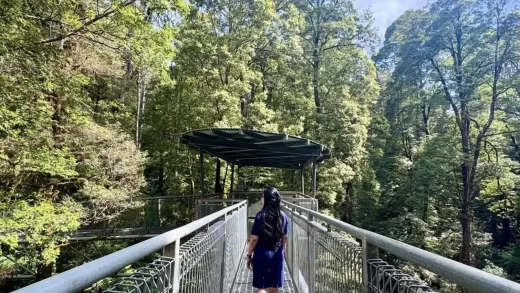Stargazing in the Outback is a real treat especially around Uluru. Billions of stars light up the sky. The clear dark sky, no light pollution from the cities, makes this one of the best places in the Southern Hemisphere to see the celestial wonders. With Ayers Rock (Uluru) and the ancient rock formations of the Uluru-Kata Tjuta National Park, you can stargaze in a beautiful and culturally significant environment.
Why Uluru is the Best Stargazing Spot
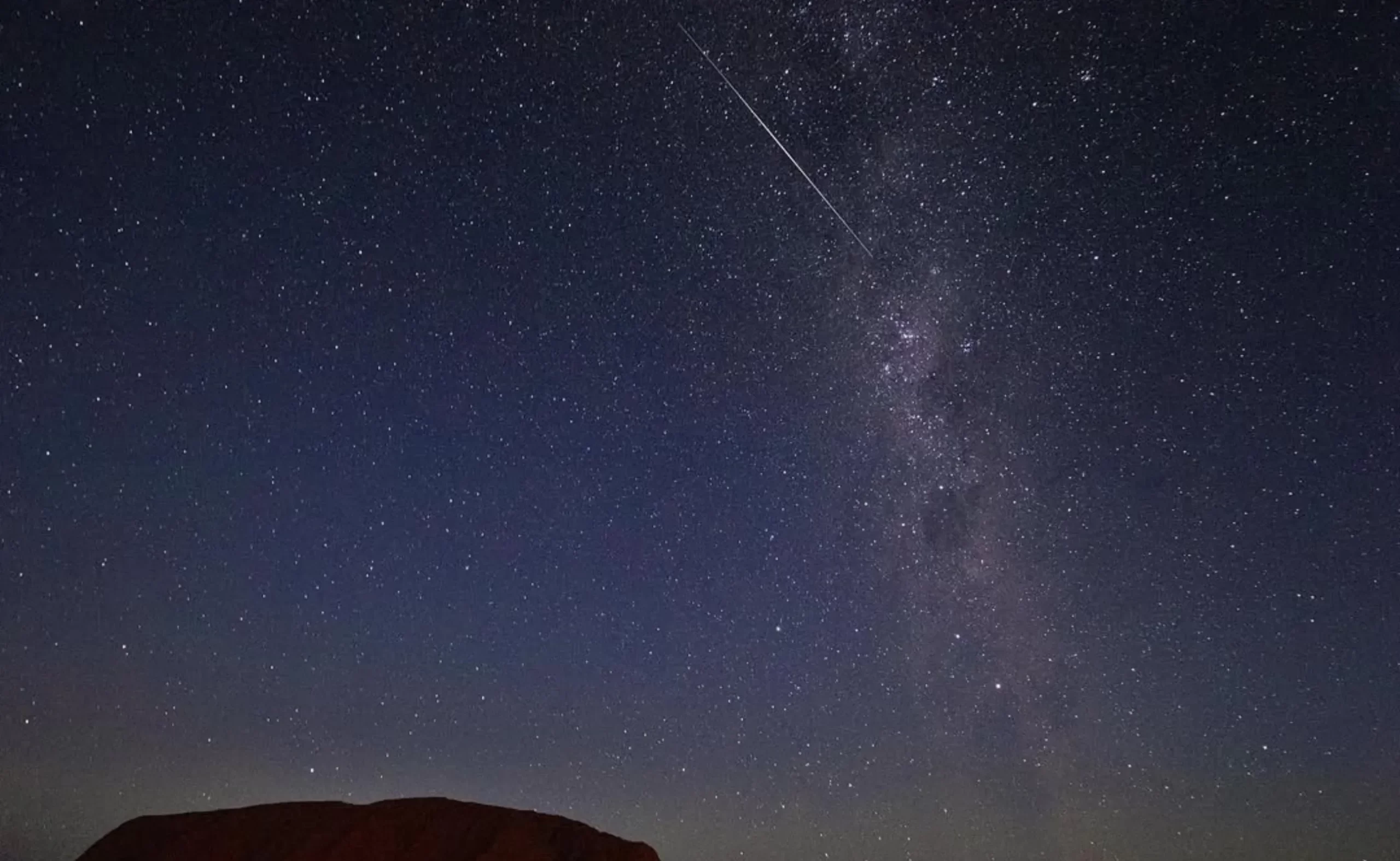
Uluru is in Central Australia, in the Northern Territory, and has the best stargazing. Minimal artificial lights and vast desert skies, perfect for seeing star clusters, planets and constellations only visible in the southern night sky. This region is far from atmospheric pollution and city lights, so the views of the cosmos are unbeatable.
The connection to Aboriginal culture and Indigenous Astronomy adds another layer to the stargazing experience. For the Aboriginal people, the stars hold ancient stories and are deeply connected to their living culture, stories of creation that have been passed down through generations. You can experience this cultural exchange through Indigenous Uluru tours that share the sacred connection between the land and the sky.
Stargazing Spots Around Uluru
1. Talinguru Nyakunytjaku Viewing Area
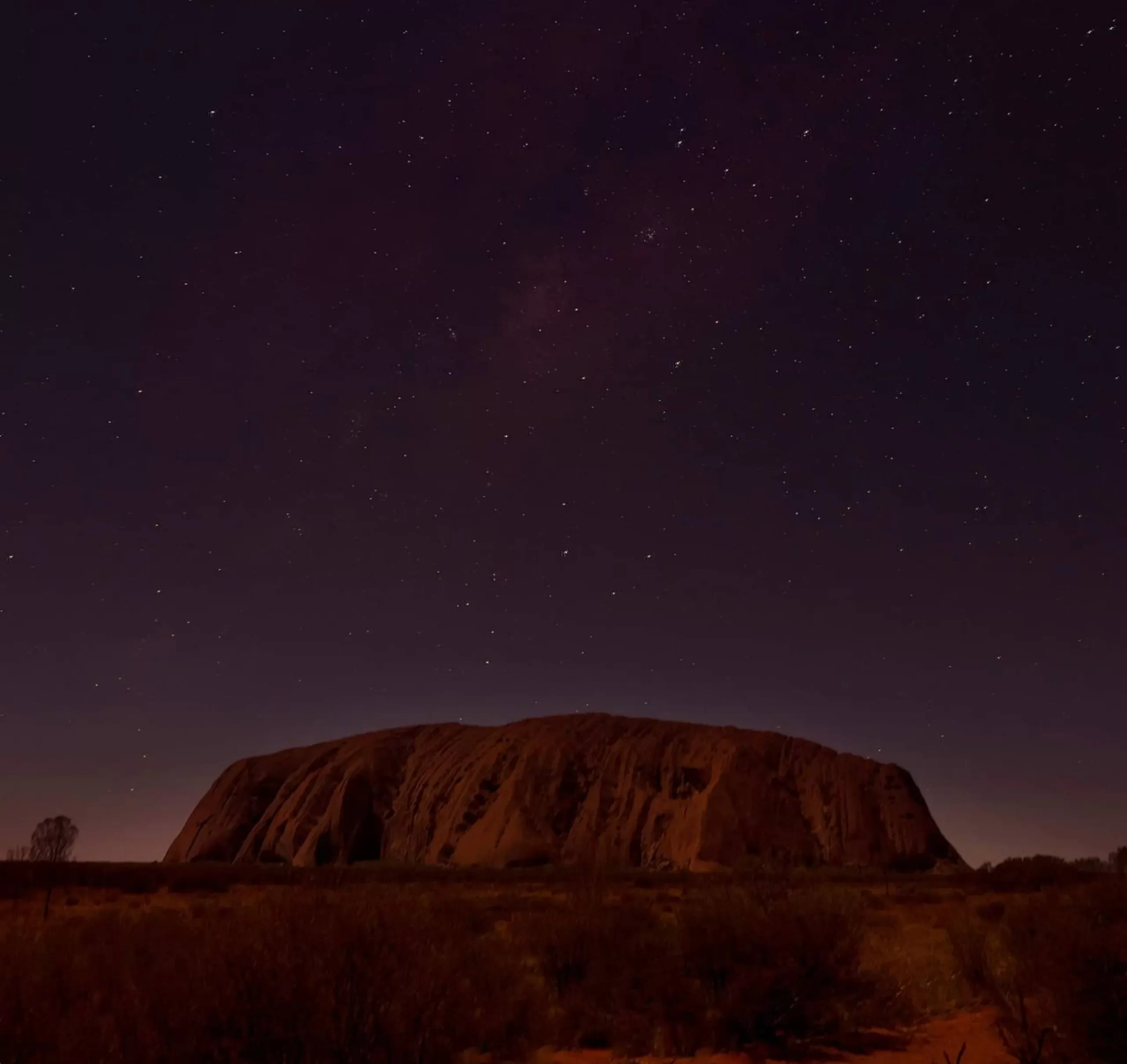
This is the most popular stargazing spot in the Uluru-Kata Tjuta National Park. Panoramic views of Uluru and the southern night sky. Ancient rock formations and cool night air are perfect for watching meteor showers, star clusters and bright stars. The conditions here are almost perfect for amateur astronomers to explore the universe.
2. Ayers Rock Resort’s Stargazing Tours
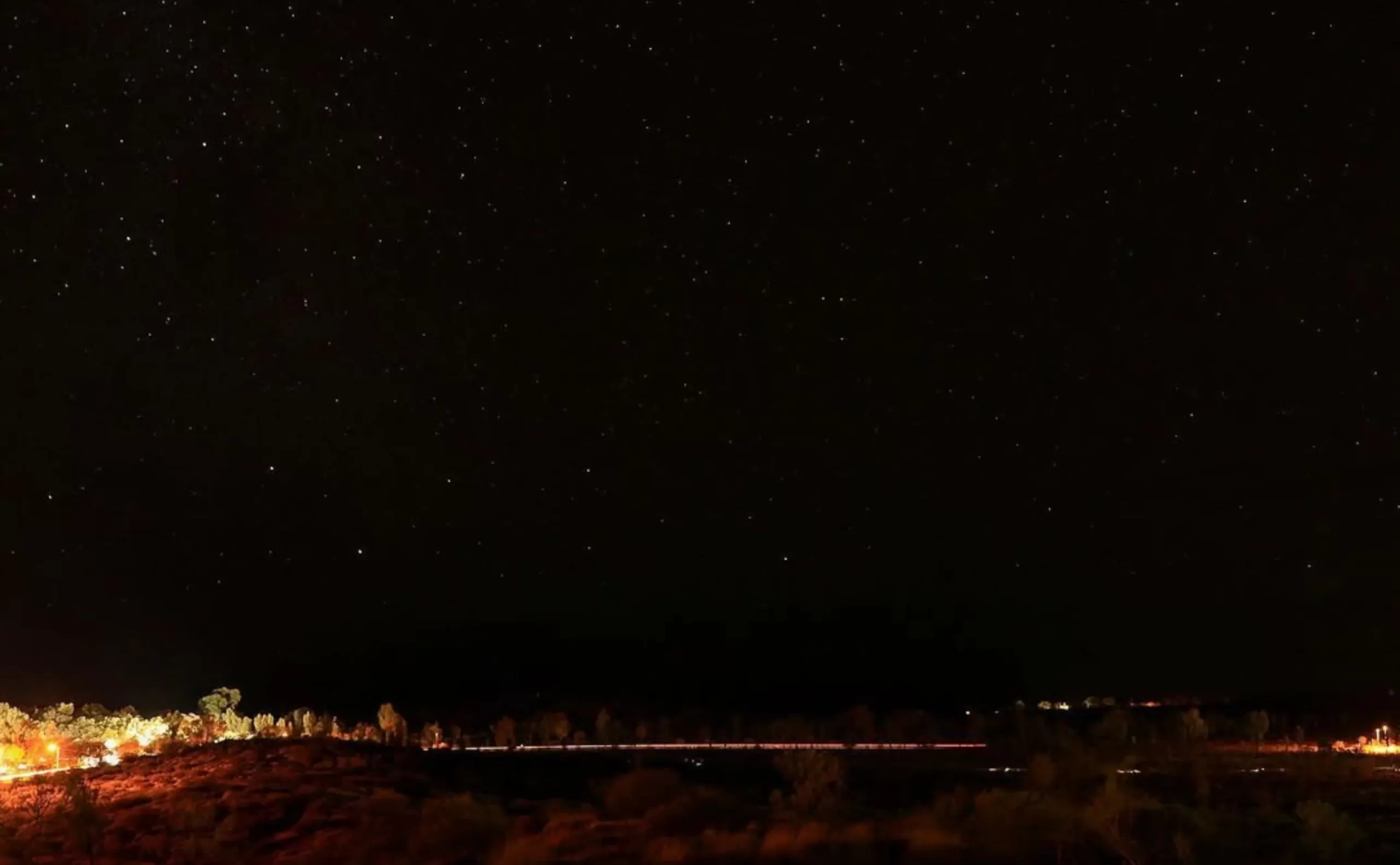
Ayers Rock Resort has a range of astronomy tours including Outback Sky Journeys and Uluru Astro Tours led by expert astronomers. These guided sessions often have professional telescopes so you can see the Southern Cross and billions of stars in incredible detail. The resort also has the Field of Light where you can stargaze with Bruce Munro’s glowing art installation.
3. Kata Tjuta (The Olgas)
West of Uluru, Kata Tjuta is a more secluded stargazing spot. Minimal light interference, stunning views of the southern night sky, constellations only visible in the Southern Hemisphere. Dark skies and ancient stories of this area make it the perfect spot to stargaze under the stars.
4. The Dunes of Uluru-Kata Tjuta National Park
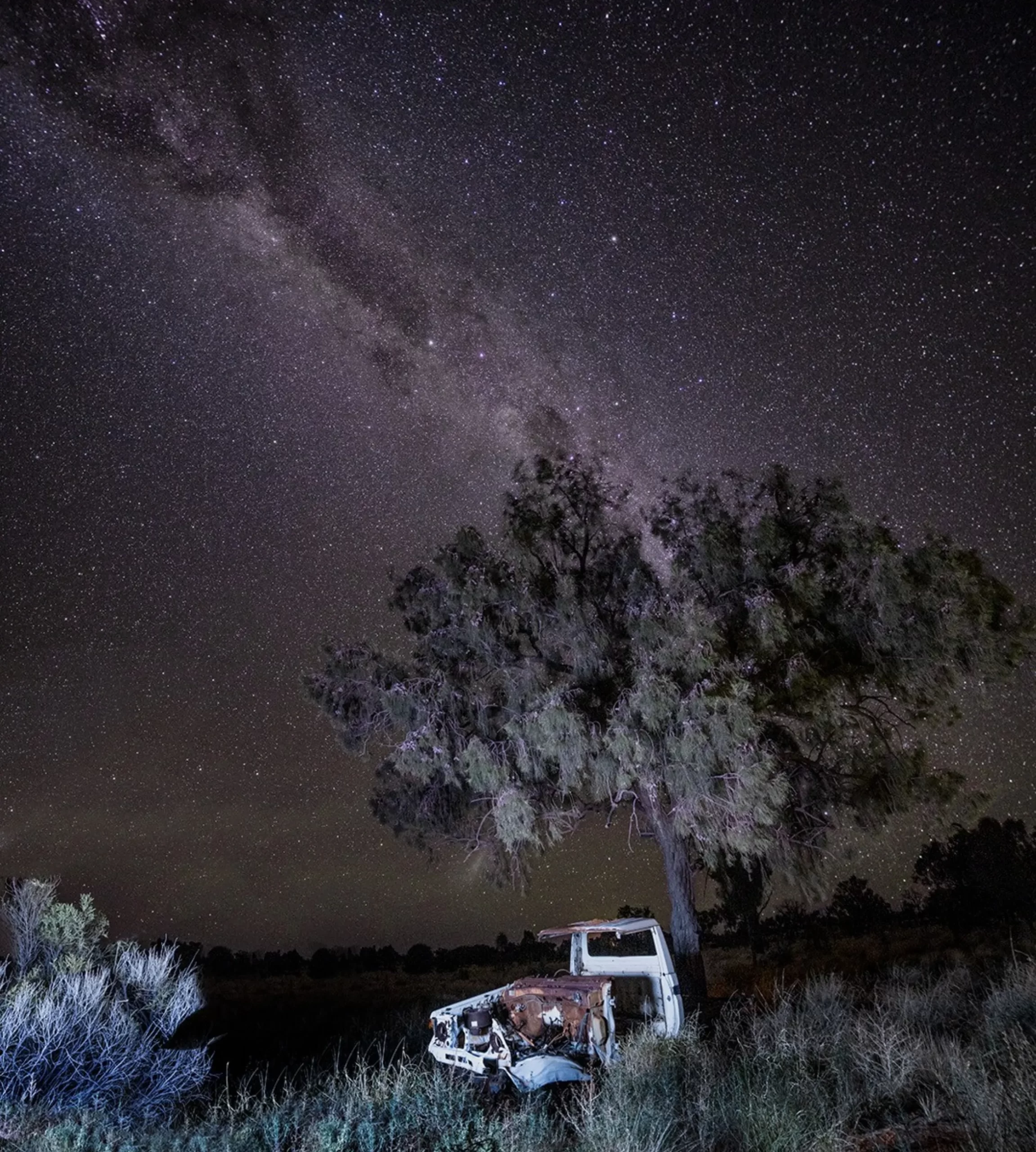
For a more secluded stargazing experience, the sand dunes in the national park are a great spot. These areas are off the beaten track and free from artificial light so that you can see millions of stars and celestial wonders. This area is also rich in Aboriginal stories so that you can connect with the land.
5. Alice Springs and Earth Sanctuary
Alice Springs is another great spot for stargazing in the Northern Territory. Earth Sanctuary offers astronomy 3 Day Uluru tours and public viewing nights, so it’s perfect for casual stargazers and amateur astronomers. The dark skies here are clear for viewing constellations and celestial objects, so Alice Springs is a must-see for any astronomy lover.
What to Bring
- Binoculars or Telescope: Bring binoculars or a portable telescope to get a closer look at celestial bodies.
- Warm Clothes: It gets cold at night in the desert, so pack layers for your stargazing session.
- Camera and Tripod: If you want to capture the night sky bring a DSLR camera with a tripod for long exposure shots of stars, planets and meteor showers.
- Star Map or App: Bring a star chart or stargazing app to help you identify constellations and celestial objects.
When to Go Stargazing
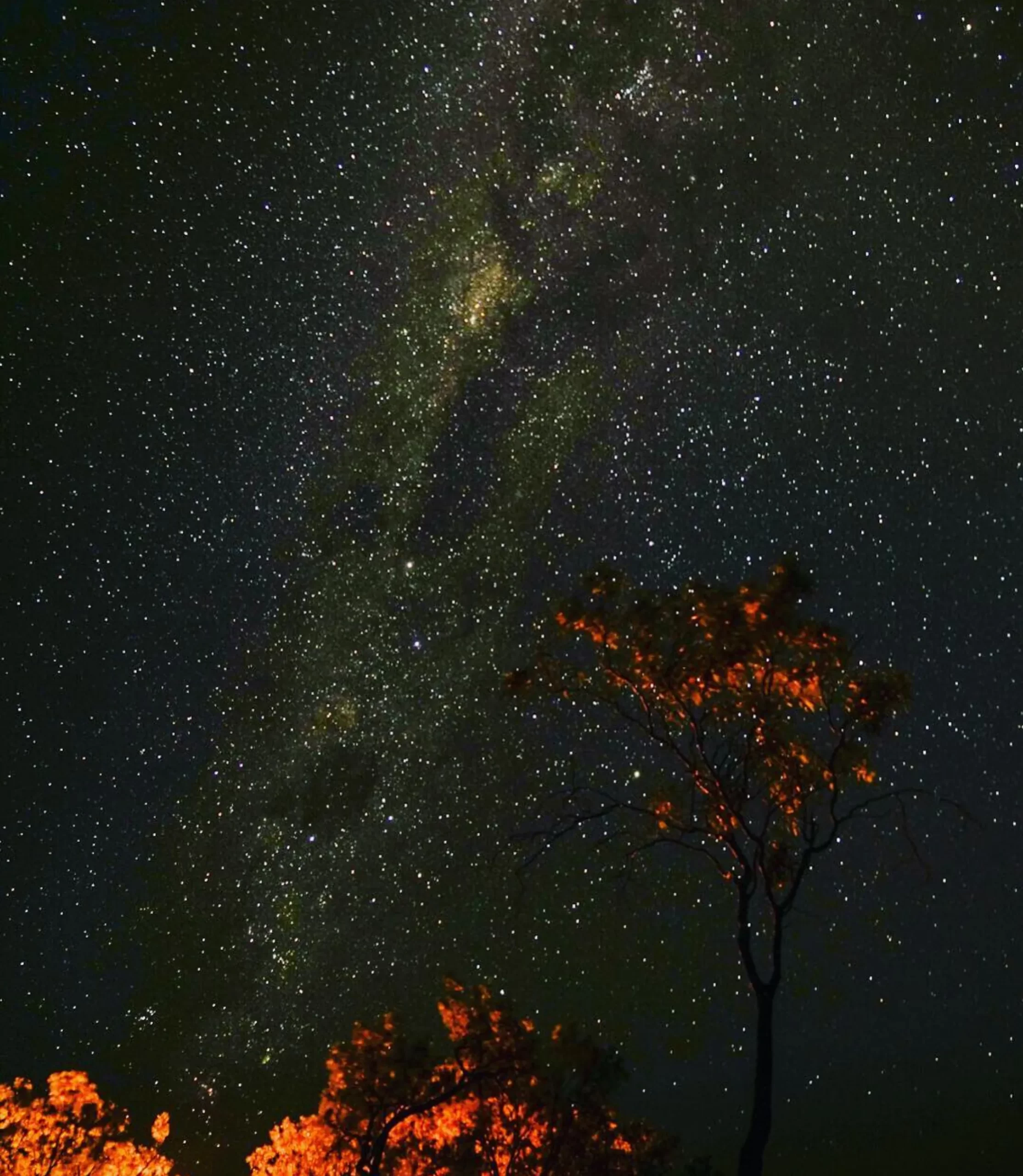
Best time to stargaze around Uluru is during the winter months (May to September) when the nights are long and the skies are clear. The lack of city lights and atmospheric pollution makes for optimal viewing conditions. While the desert skies are clear year round the summer months can be hot and cloudy.
Indigenous Astronomy and Cultural Insights
Stargazing around Uluru is more than just looking at the stars—it’s a window into the deep cultural heritage of the Aboriginal people. Indigenous astronomy is part of their ancient stories, and celestial bodies play a crucial role in navigation, seasonal changes, and spiritual beliefs. Through Aboriginal Uluru tour like Yagurli Tours and Earth Sanctuary Astro Tours, you can learn about the rich tradition of Indigenous starlore.
Conclusion
Uluru and the surrounding area is a must see for any stargazer. With its perfect spot for viewing constellations, no light pollution and strong Indigenous culture this region in Central Australia is the ultimate stargazing destination. Whether you’re an experienced astronomer or just interested in the stars the Outback has got you covered.
FAQ
Why is Uluru a good spot for stargazing?
Uluru has zero light pollution and is in the Southern Hemisphere so you can see the Southern Cross which can’t be seen in the northern hemisphere. The connection to Indigenous stories and ancient rock formations is the cherry on top.
What do I need to bring for stargazing at Uluru?
You can see the stars with your eyes, but binoculars or a telescope will make it even better. A camera and tripod will also help you get professional shots of the night sky.
Are there stargazing tours?
Yes, Ayers Rock Resort and other nearby locations offer guided astronomy tour to Kata Tjuta with resident astronomers, telescopes and explanations of the celestial wonders. These tours often cover Aboriginal Astronomy and cultural stories.
What should I wear for stargazing in the Outback?
The Outback can get cold at night even in the warmer months so bring warm clothing and a blanket to keep you comfortable during your stargazing.
Can I see meteor showers at Uluru?
Yes, you can see meteor showers, star clusters, etc. Check with the local visitor centre or tour operators for stargazing sessions around these events.
